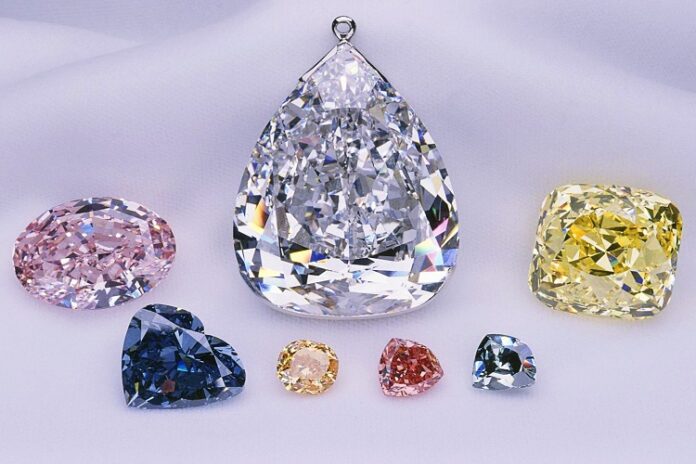You don’t need any excuse to fall in love with any diamond, it’s happens majestically. Their journey from raw coal to immense heat and pressure, finally a fine cut shining piece can lure anyone. This rare gem is not only used in fashion and beauty products but also in different uses like dentistry, industrial machines, audio equipments, etc.
Colored diamonds are not a new trend; people have always loved colored diamonds as much as classic colorless diamonds. You can explore several beautiful designs at Tiffany colored diamond. Without any doubt, different color options in diamonds bring shine to your eyes but have you ever wondered that how these colorless diamonds get their different colors? Most of the color variations come naturally in these diamonds, some react with their impurities and some are over heated under the earth’s crust. These are the popular natural colors of diamonds and how they are formed:
Blue – This beautiful and calm color comes from boron, an impurity present in raw diamonds. When boron atomsreact with carbon atoms they form a crystal structure and later it results in absorption of green, red and yellow light. Thus, it reflects blue light and forms a blue diamond crystal. It also comes in grayscale as its color variation.
Purple – Scientist are not certain about this color, it said that purple color is due to the distorted structure while formation and violet is its other color variation. But most of the scientists believe that it is due to the hydrogen atoms which result in this color.
Red – Red color is formed by the intense heat and pressure on the stone during the formation under the earth’s crust. This caused distortion in the crystal lattice and absorbs green light, reflects red. It has color variations of pink and brown.
Yellow – The soothing hues of yellow diamonds are resultant of nitrogen atom’s unique arrangement. In the process of diamond formation under the earth’s crust, nitrogen atoms form themselves in such a ways that they absorb blue light and produce yellow reflection. Also, sometimes these nitrogen atoms form themselves in such way that they absorb blue as well as yellow light which results into an orange colored diamond.
Green – At the last stage of diamond formation under the earth’s crust, they get their green color. When they reach at the last layer of soil, just before coming at the Joyas únicas, they absorb a naturally occurring gas from the soil which turns properties into absorbing red and yellow right, reflecting green light.










